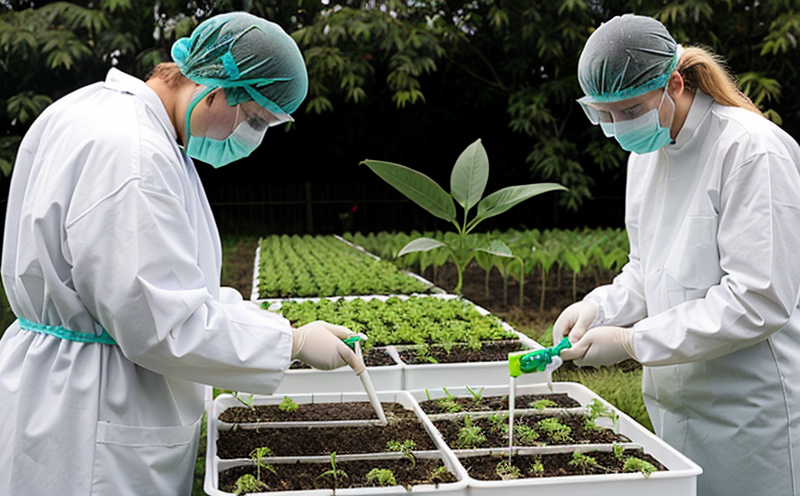Plum Pox Virus (Sharka) Testing
The Plum Pox Virus (PPV), commonly known as Sharka in some regions, is a highly contagious viral disease that affects plants of the genus Prunus. This virus primarily targets fruit trees such as plums, peaches, and apricots, causing significant economic losses worldwide due to reduced yield and quality. Accurate detection and identification are crucial for effective management strategies.
Our laboratory offers comprehensive Plum Pox Virus testing services tailored specifically towards ensuring compliance with international standards and providing reliable results that support decision-making processes in the agricultural sector. By leveraging advanced diagnostic techniques, we provide precise data to help clients make informed choices regarding plant health monitoring programs.
The process begins with careful sample collection from affected orchards or nurseries where suspect symptoms are observed. Properly prepared samples then undergo rigorous analysis using enzyme-linked immunosorbent assays (ELISAs), reverse transcription polymerase chain reaction (RT-PCR), and other validated methodologies approved by relevant authorities like OIE/FAO.
| Step | Description |
|---|---|
| Collection | Sampling from symptomatic trees or branches. |
| Dissection | Removing leaves, buds, and small twigs for analysis. |
| Maceration | Breaking down tissue into fine particles. |
Once the samples are processed correctly, they are subjected to ELISA tests which detect specific antibodies against PPV. For more definitive results, RT-PCR is employed to amplify viral RNA present in the sample, allowing for quantification and identification of the pathogen.
The significance of accurate Plum Pox Virus testing cannot be overstated given its potential threat to global horticulture industries. Early detection enables prompt quarantine measures and eradication efforts which can prevent widespread infection within nurseries and commercial orchards.
Industry Applications
- Incorporated into Integrated Pest Management (IPM) programs to monitor disease spread.
- Used during certification processes for fruit exports requiring PPV-free status.
- Aided in identifying and managing infected plants within nurseries and seedling production facilities.
| Methodology | Precision | Cost | Turnaround Time |
|---|---|---|---|
| ELISA Test | Highly sensitive but less specific. | Moderate cost. | Fastest turnaround time. |
| RT-PCR Assay | Very high specificity and sensitivity. | Higher cost than ELISA. | Moderate turnaround time. |
International Acceptance and Recognition
The Plum Pox Virus testing protocols we employ are aligned with international guidelines set forth by organizations such as the World Organization for Animal Health (OIE) and the Food and Agriculture Organization of the United Nations (FAO). Compliance with these standards ensures that our results carry significant weight in regulatory contexts.
Our laboratory adheres strictly to ISO 17025 accreditation requirements, ensuring that all tests conducted meet stringent quality assurance criteria. This includes adherence to best practices for sample handling, equipment calibration, and data interpretation.
The importance of international acceptance cannot be overstated as many countries require PPV-free certification before allowing importation or exportation of certain fruit products. Our rigorous testing process helps maintain these standards while also providing valuable insights into the prevalence and distribution patterns of this virus across different geographical regions.
Environmental and Sustainability Contributions
Incorporating accurate Plum Pox Virus testing into your operational protocols can contribute positively towards sustainable agricultural practices by helping to protect biodiversity. By preventing the spread of this virus, we support efforts aimed at maintaining healthy ecosystems within orchards and surrounding areas.
Our commitment to sustainability extends beyond just disease control; it also involves minimizing environmental impact through efficient use of resources during sample preparation and analysis processes. Additionally, our collaborative approach ensures that local communities benefit from improved fruit production techniques derived from accurate PPV testing results.





